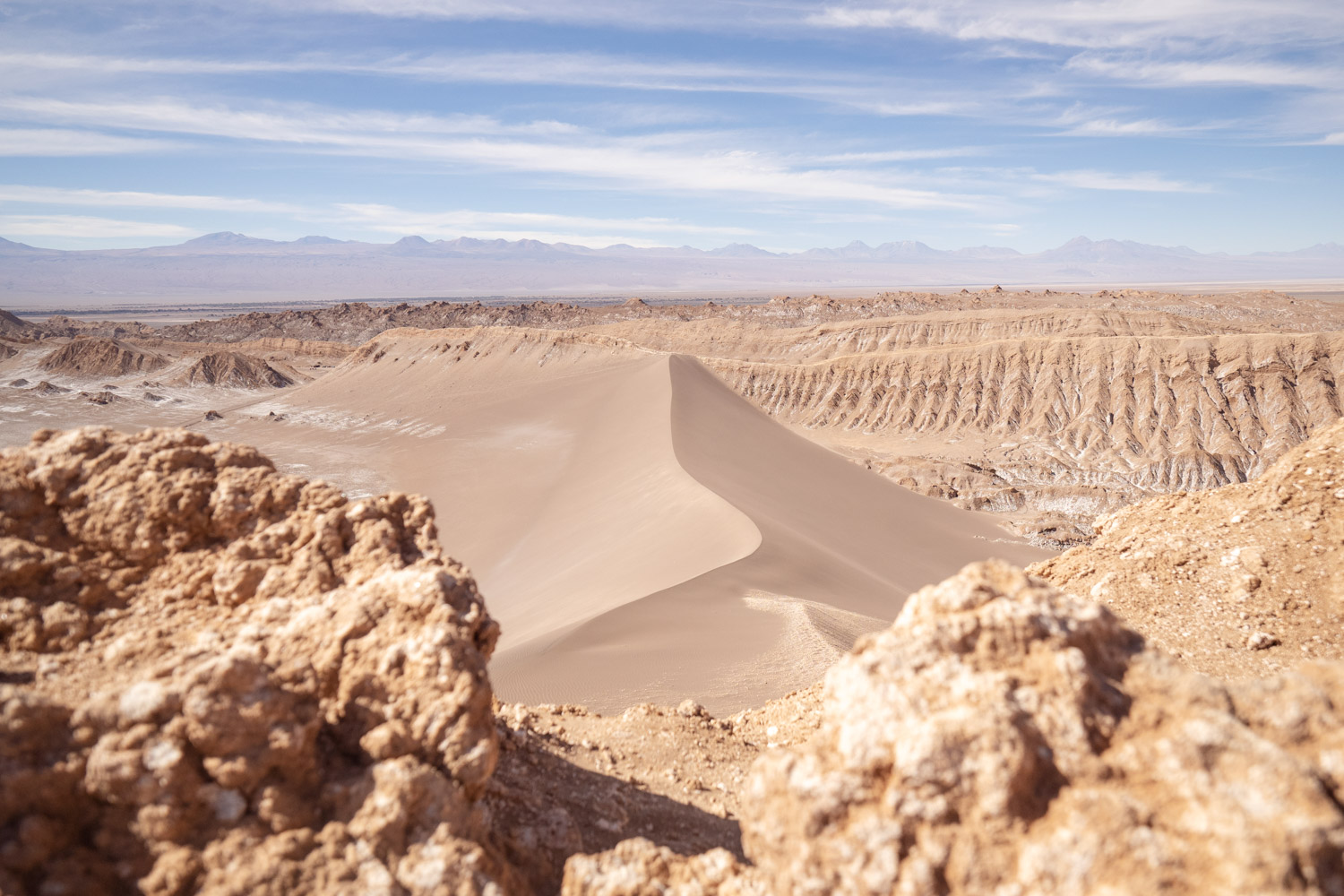
The Olympus E-M1X at work in the Atacama Desert, Chile
Dust, sandstorms, chilly conditions and contrasting extreme heat are all factors that come into play when photographing in one of the driest places on earth.
Chile’s Atacama Desert is known as the driest non-polar location in the world, with some areas never receiving a drop of rainfall in over 57 years. It’s dry, vast and oh so photogenic. With the E-M1X built with industry leading weather proofing, I put it to the test in San Pedro de Atacama, a great base for exploring the other worldly landscapes of the desert.
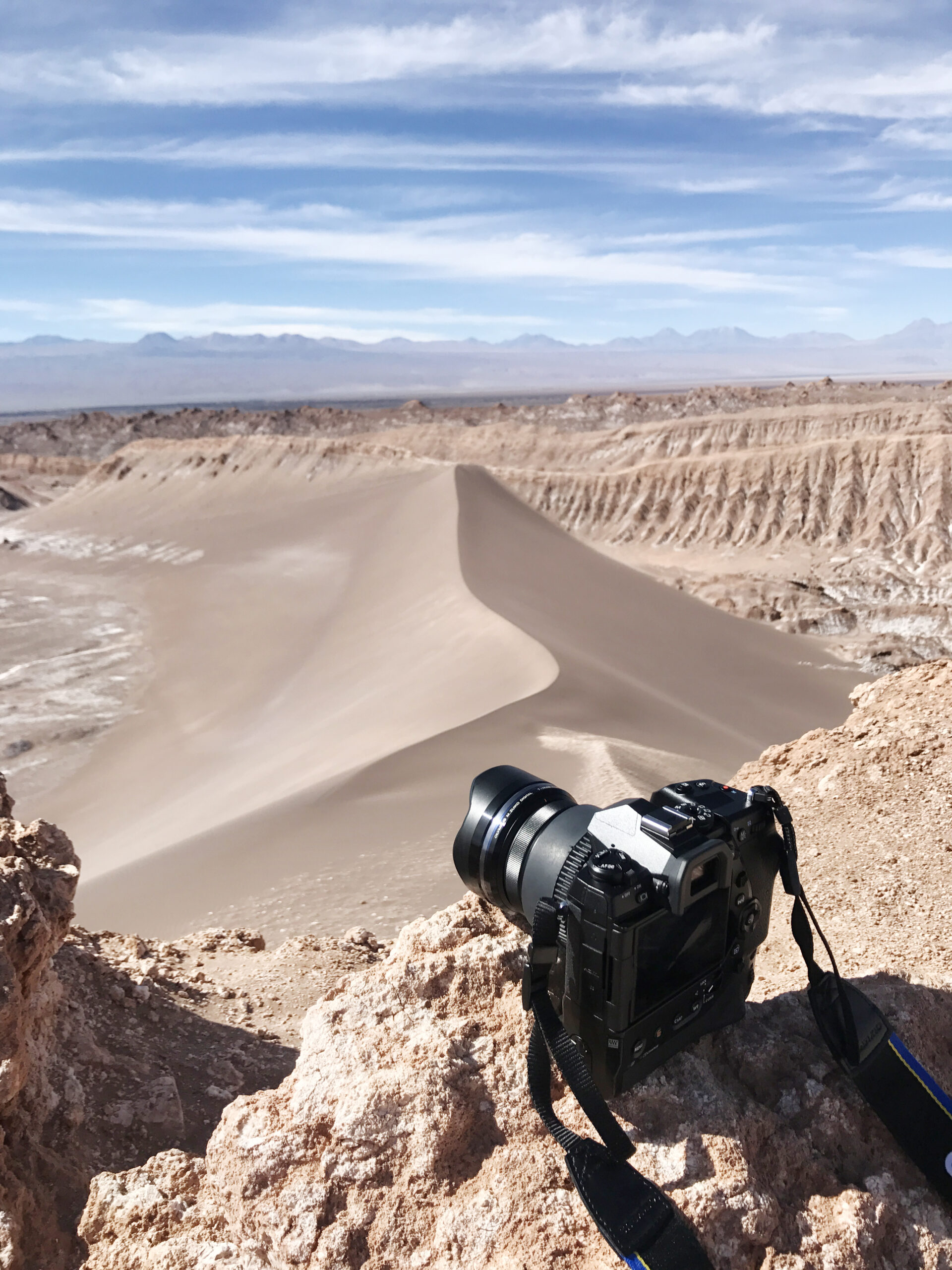
From salt flats to volcanic skylines the area is a photographer’s playground of all things naturally beautiful, carved by strong winds and intense weather conditions. When photographing in locations like this it’s essential to have gear that can withstand a little tough love. Knowing that the Olympus OM-D E-M1X can handle almost anything meant I could focus on composing my shots without worrying if the dunes were whipping up sand or if I needed to rest the camera on the salt flats while photographing flamingos.
The diversity that exists in the Atacama Desert is almost unbelievable. A place where you’d think nothing can live is filled with wildlife, flowers and plants that thrive in a landscape of extremities. On the Atacama Salt Flat, you’ll find a flamboyance of Flamingos nibbling on the algae of the shallow lagoons. Making beautiful subjects to compose against the backdrop of the Andes Mountain range, I used the M.Zuiko 300mm f4 lens with the E-M1X to capture a series of images of these graceful birdies.
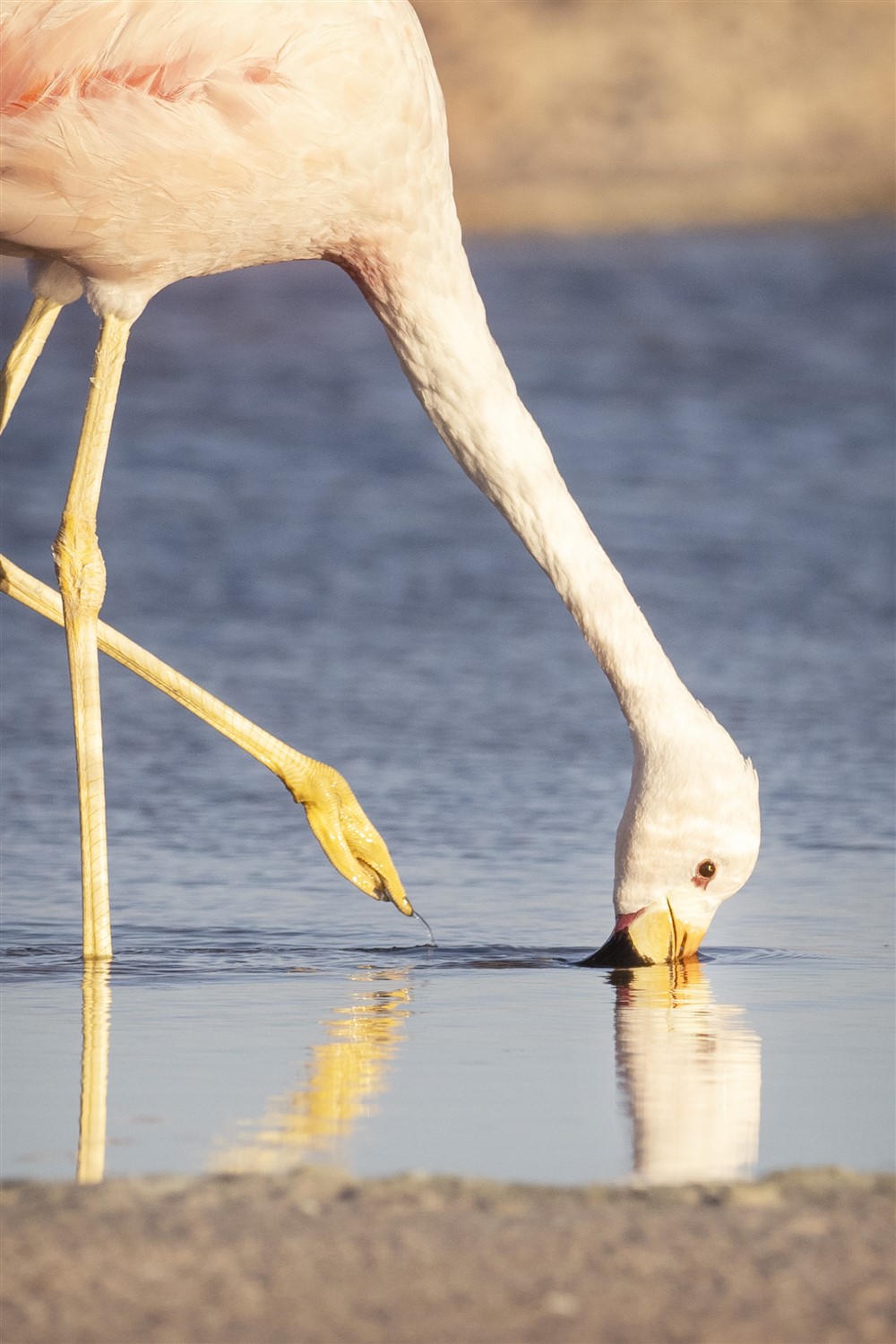
Now, I’ll share a little confession, I rarely travel with a tripod. I hate lugging them around and because I know the Olympus/OM SYSTEM cameras have such incredible image stabilisation, it’s really hard to justify carrying the extra weight. Instead, if I need to balance myself when shooting with the 300mm telephoto lens I simply lie on the ground and rest it on something solid. In this case it was the crusted salt found on the shores of the salt lakes that meant I could photograph the flamingos from a distance and capture sharp images.
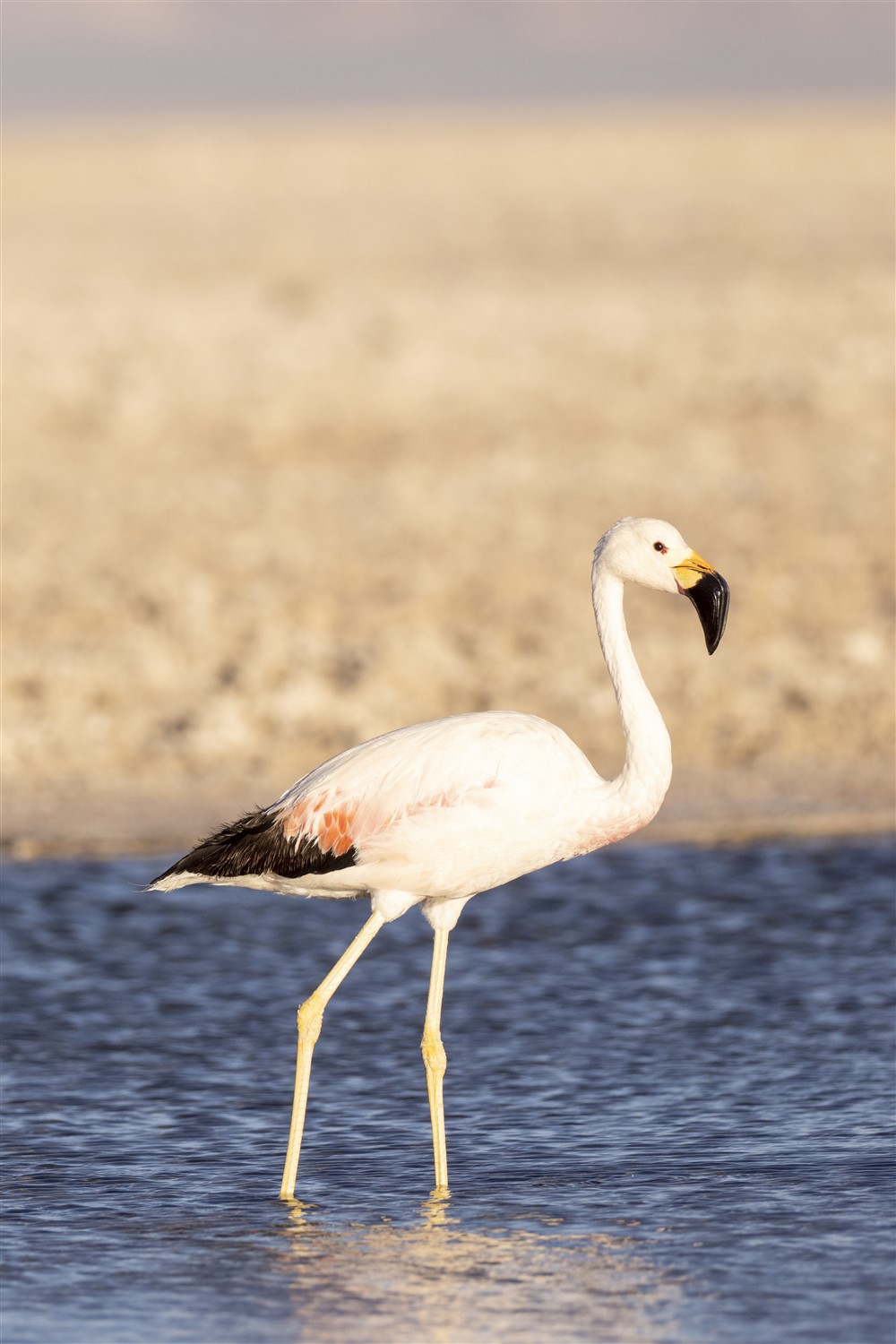
Another area of the desert not so abundant with wildlife but strikingly beautiful is the Valley of the Moon or El Valle de la Luna. With a crater-like appearance caused by a contrast of salt and sand, the landscape is somewhere that’s hard to believe is even real. It took me a while to take it all in and work out a composition that would do the scenery justice, switching out the M.Zuiko 7-14mm wide angle lens for the M.Zuiko 40-150mm f2.8 trying to capture a variety of perspectives to showcase the beauty of this location.
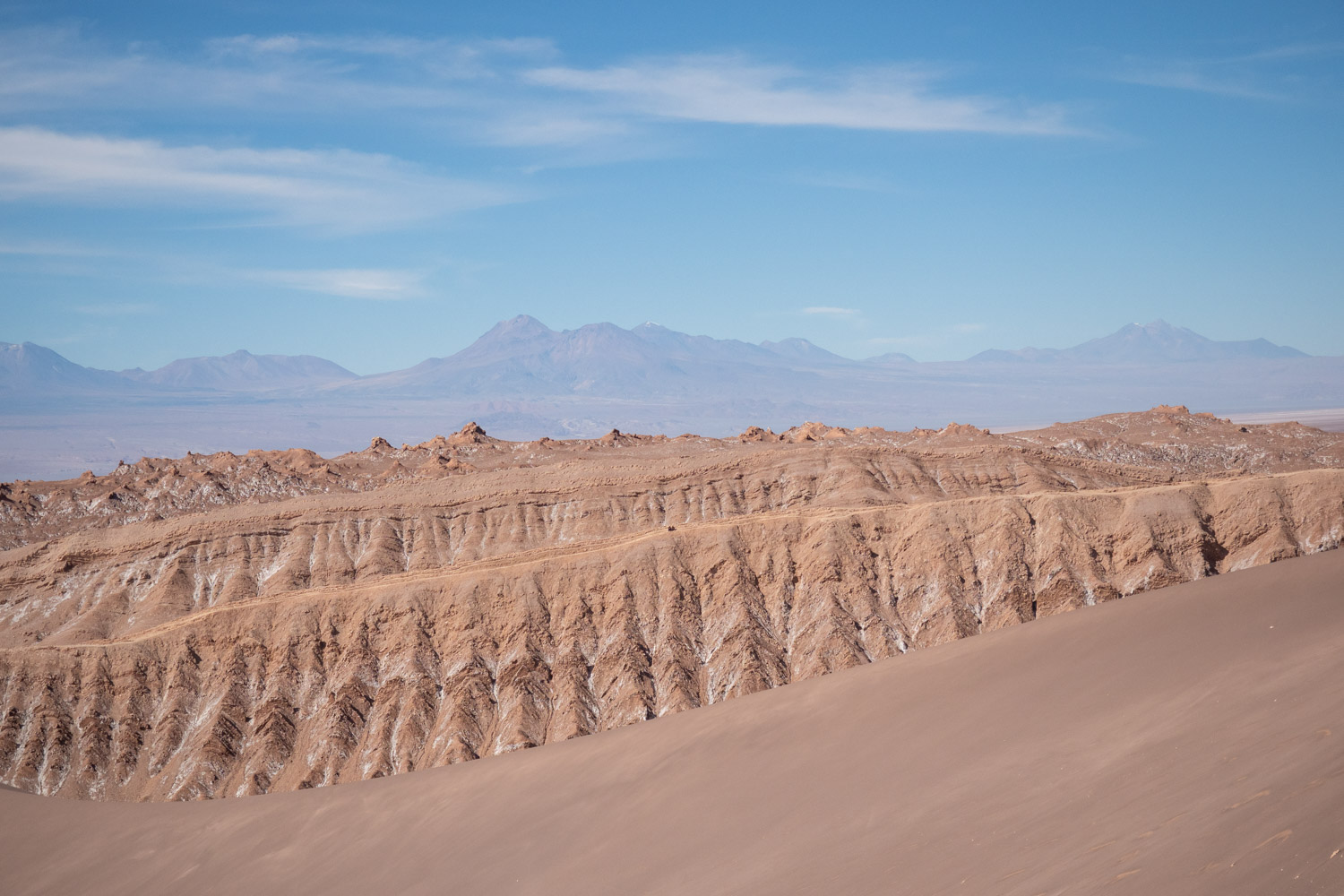
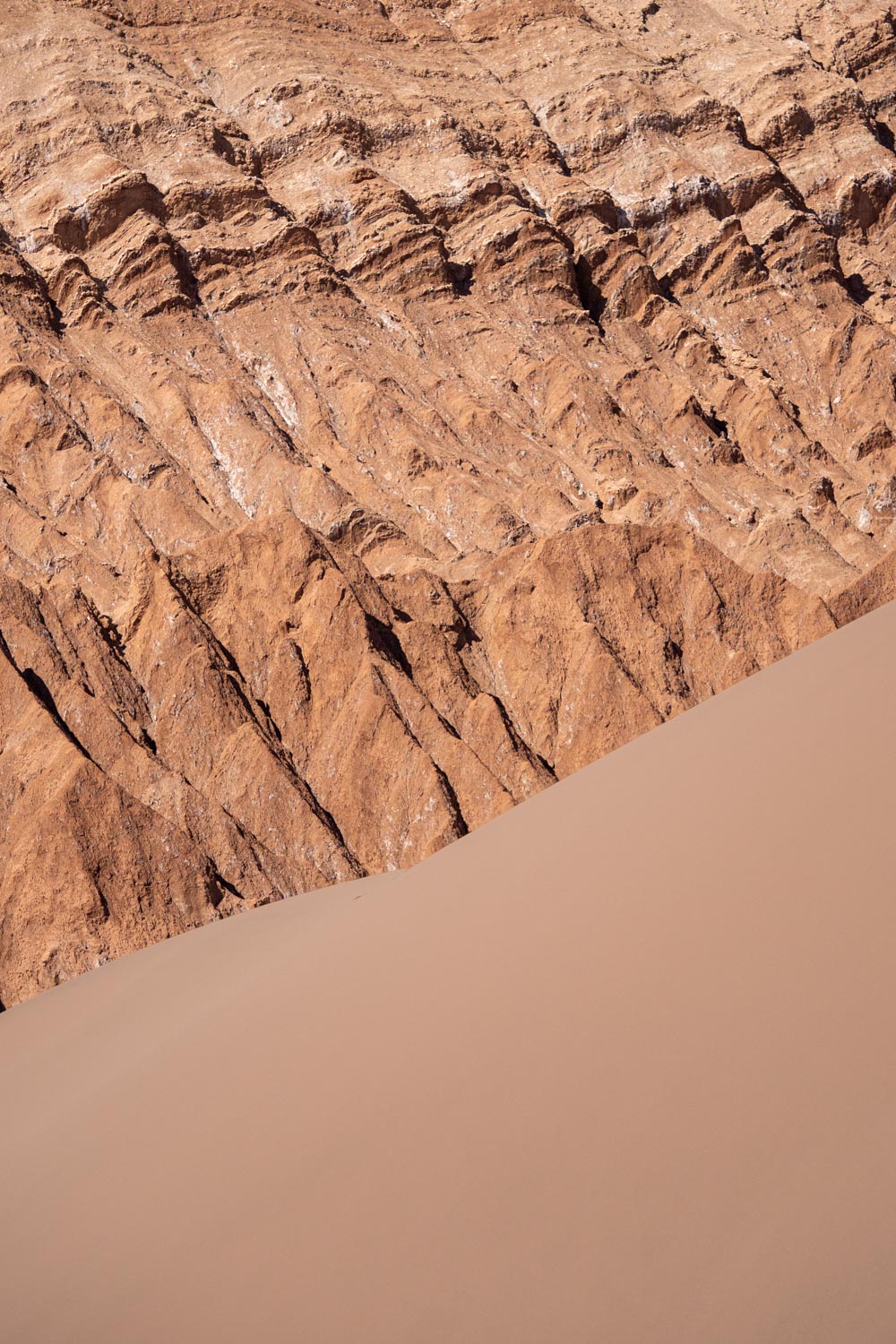
Captured with the M.Zuiko 40-150mm f2.8
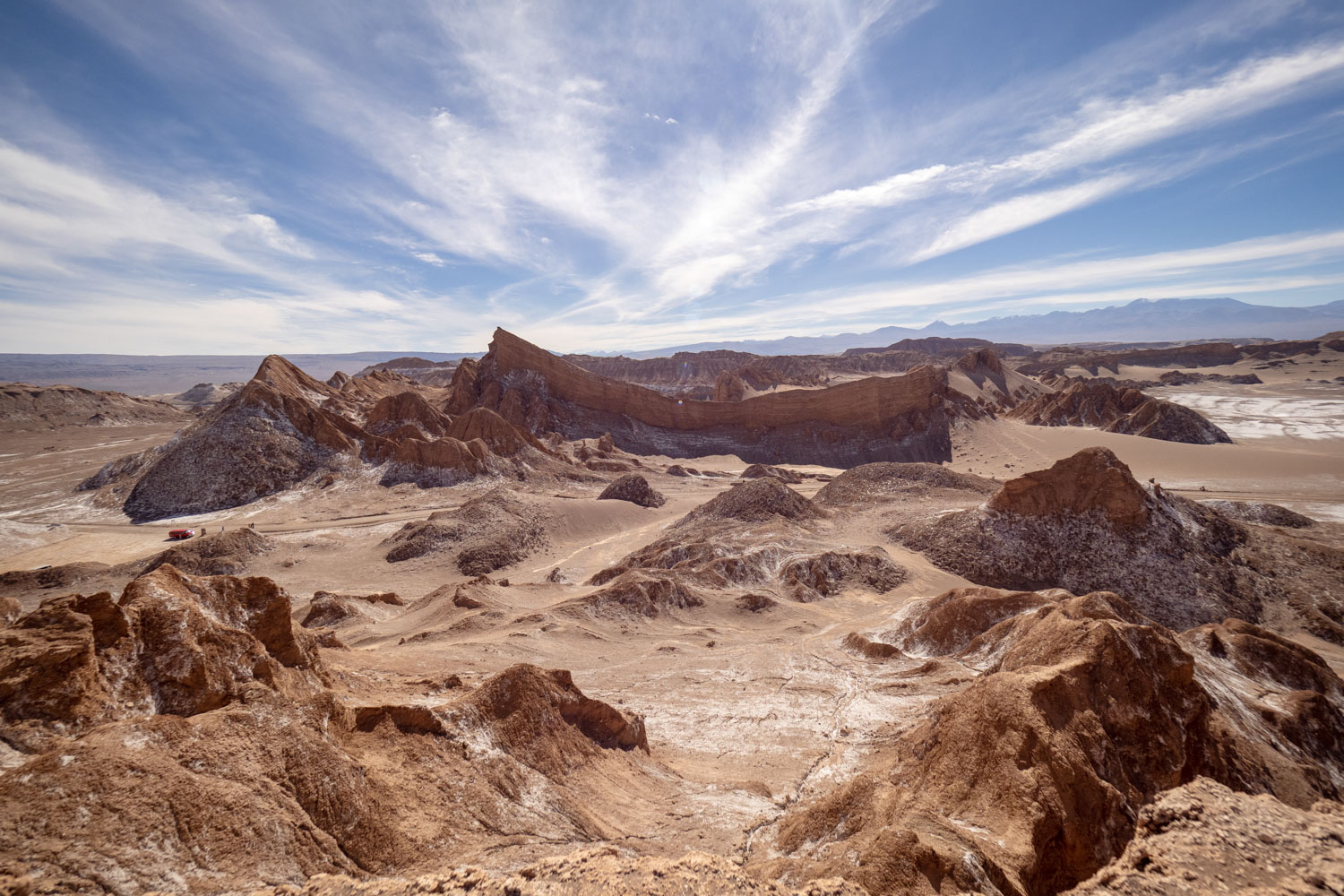
Captured with the M.Zuiko 7-14 mm f2.8
In the end, I wasn’t happy with my first set of images and returned at sunrise on my last day in the area to try again. While the first day I visited was calm and clear (perhaps the reason I felt my shots were a little flat), as luck would have it, the final sunrise was on a day where a sand storm was predicted and winds were gusting up to 71km per hour. With winds that strong, the last place you want to be is on a sand dune! But…I figured I’d only be there once so ventured up the dune and tried again.
Sand was blasting the E-M1X but the sunrise put on one of the best shows I’ve ever seen. Clouds were filled with dancing light that seemed to hover above the sand dune providing a stunning contrast to the arid landscapes below. If it wasn’t for the weather proofing, I would’ve had to pack up and head back to the car but the E-M1X walked away in much better condition that I did with sand in my eyes, ears and skin that felt like I’d been scorched by the sun.
Where to Stay in San Pedro de Atacama?
I stayed at the incredible Alto Atacama, a complex that appears to blend into it’s desert surroundings. Take a peek at my Visual Hotel Review from the stay!
Related articles:
Photographing the Valle de la Luna, Chile
How to Use Your Camera in Extreme Environments
Becoming a Professional Travel Photographer
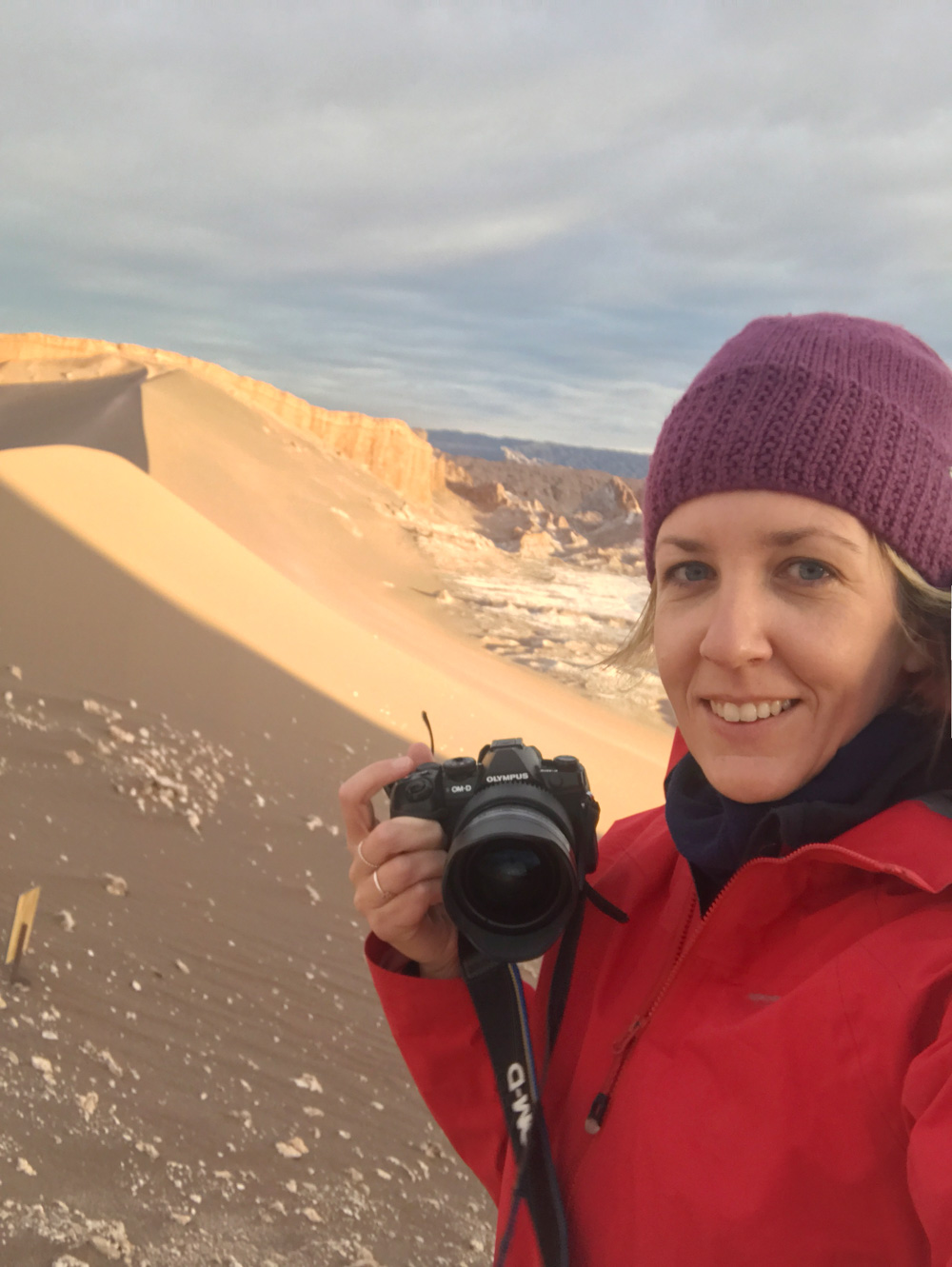
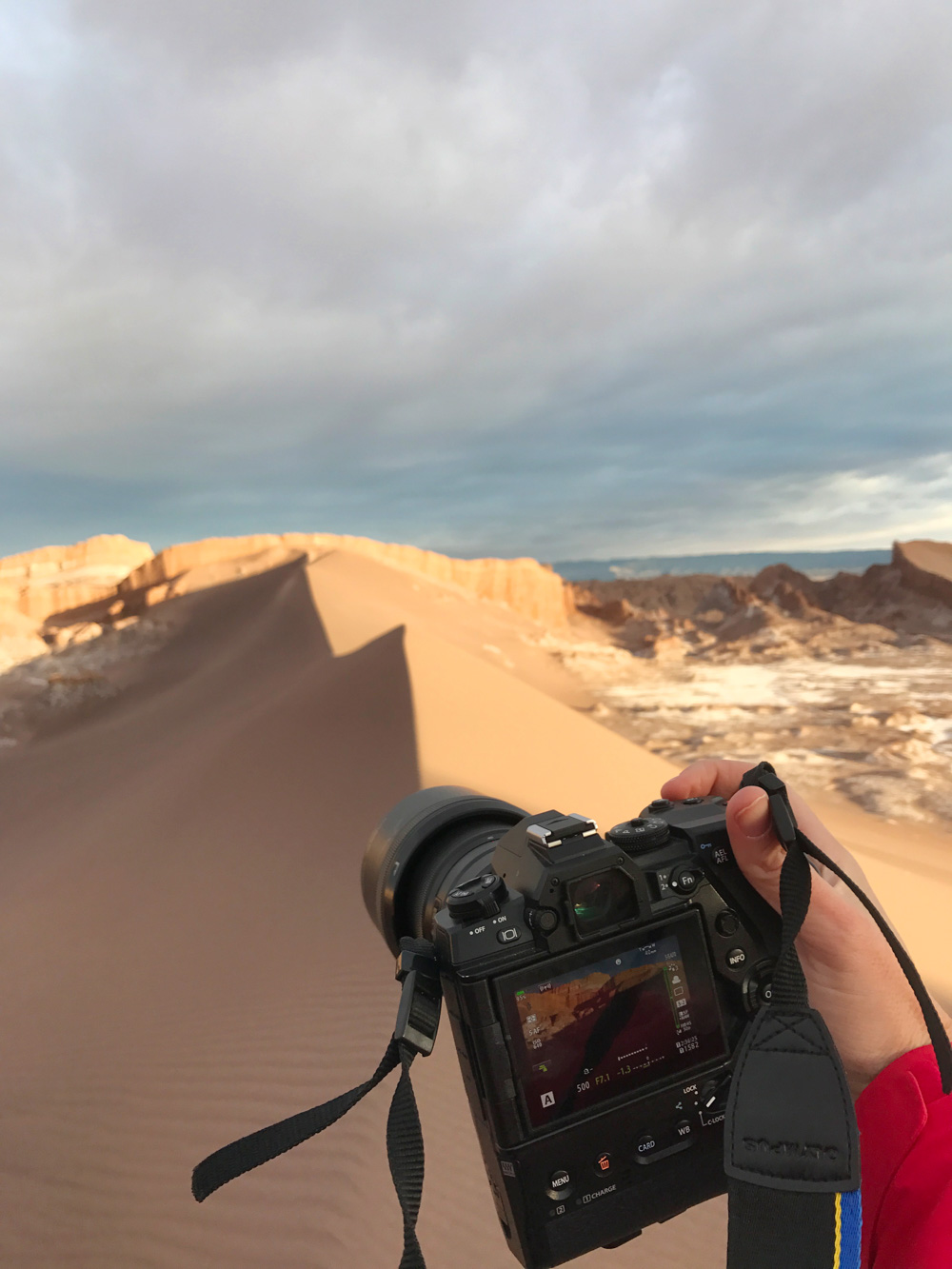
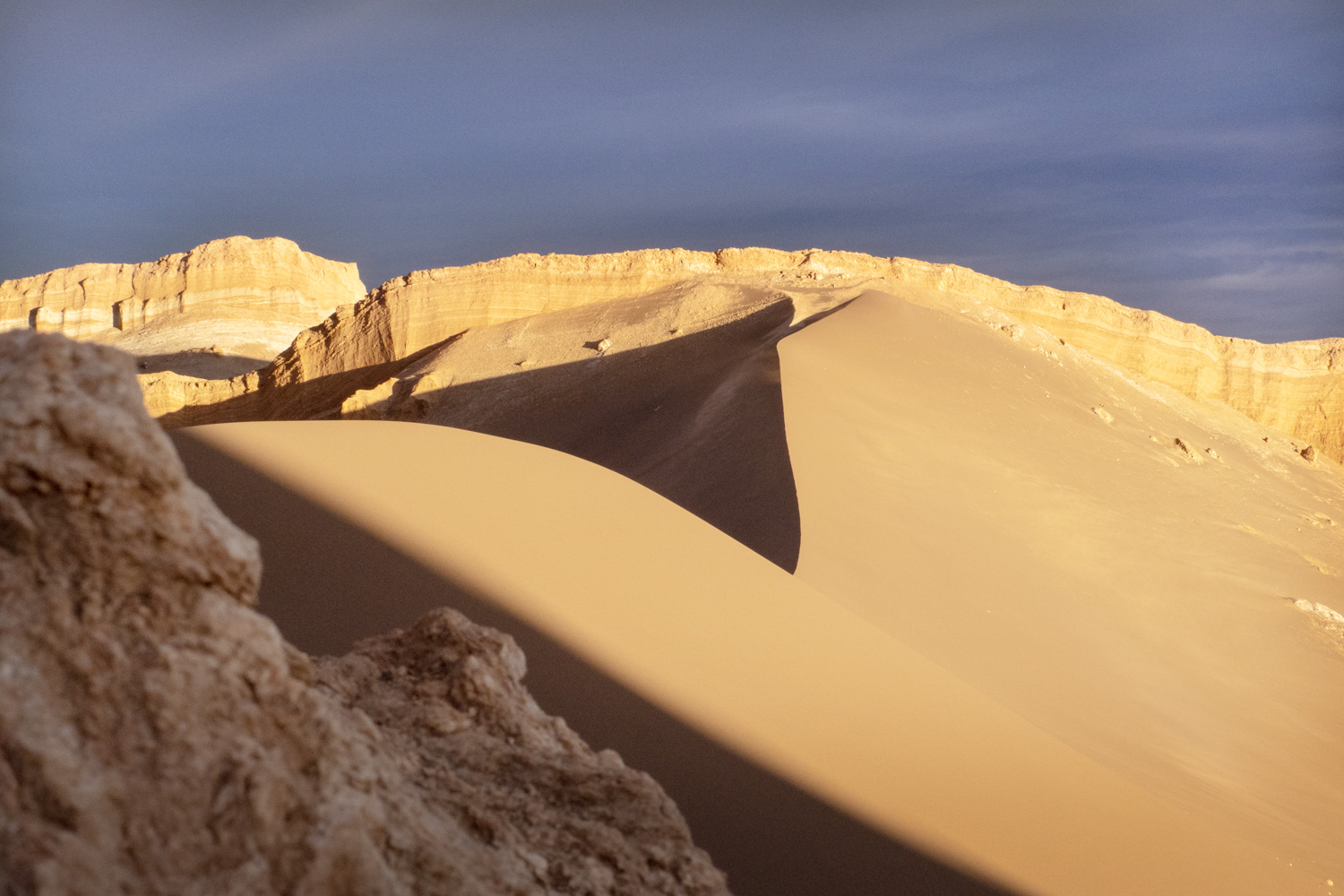
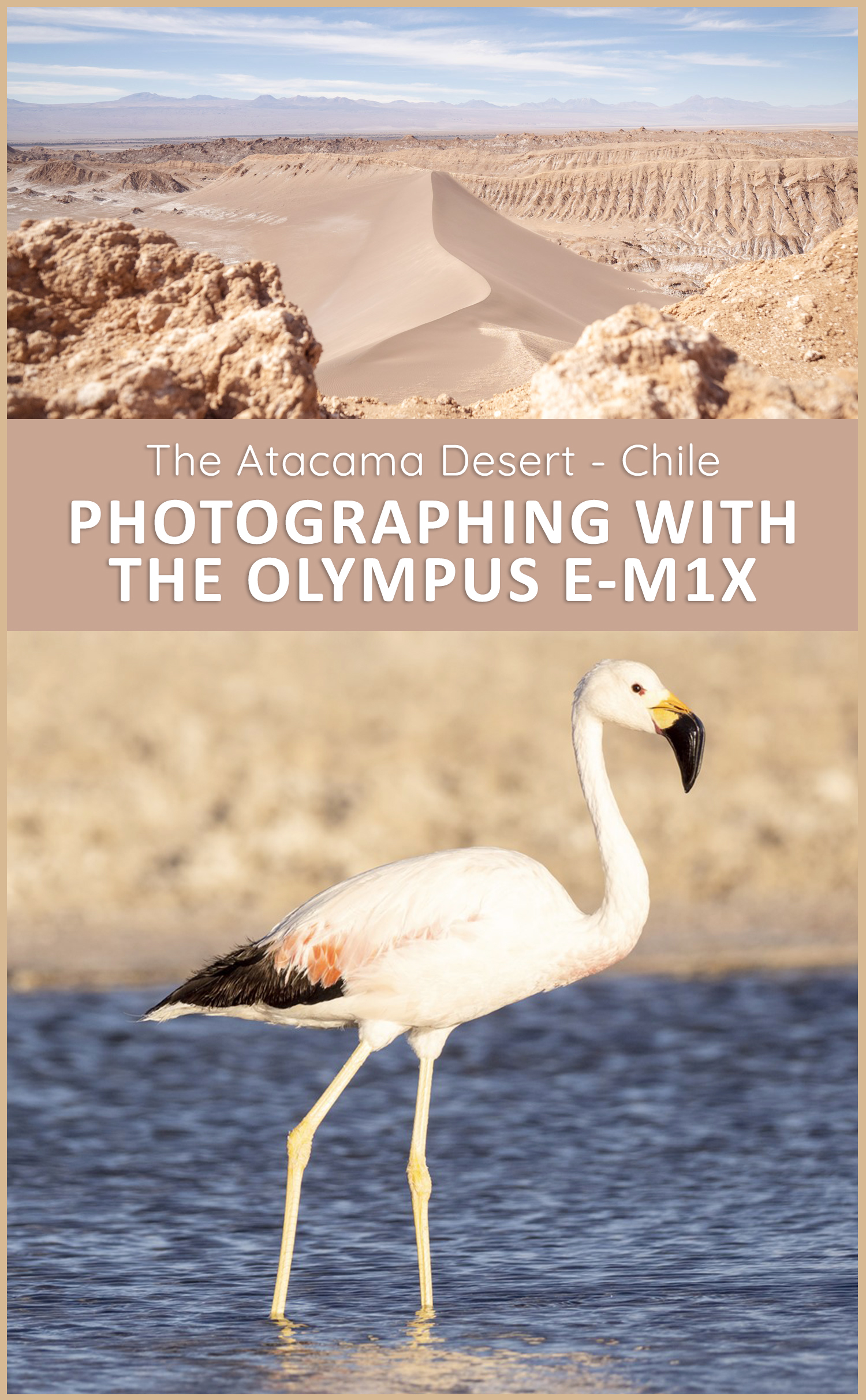
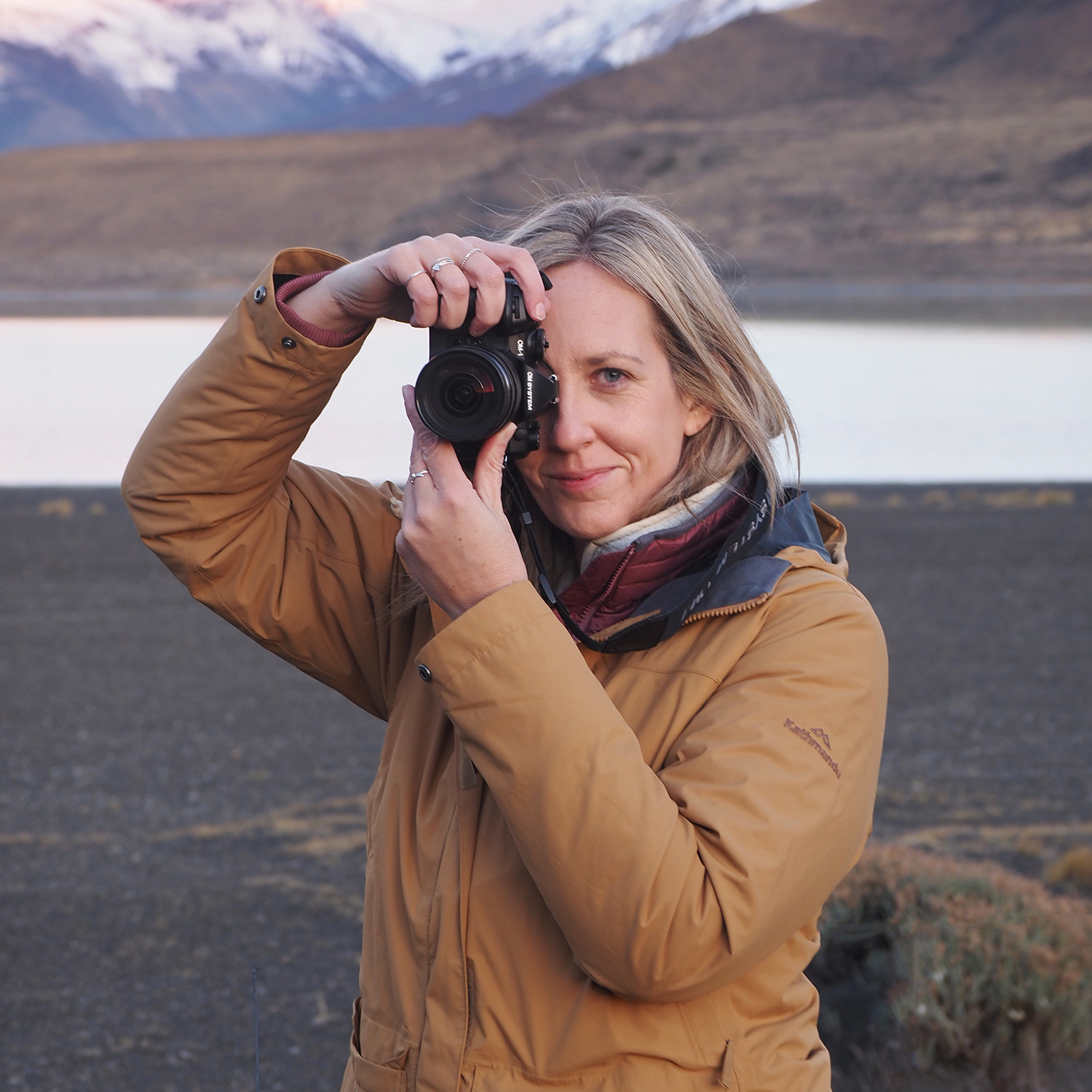
Hello! I’m the founder and photographer behind The Wandering Lens.
With 19+yrs experience as a professional travel and landscape photographer, all advice found on this site is from my personal experience, or that of contributors, on the road. I hope it’s useful for your own travels and would love to hear in the comments about your trips and experiences around the world.

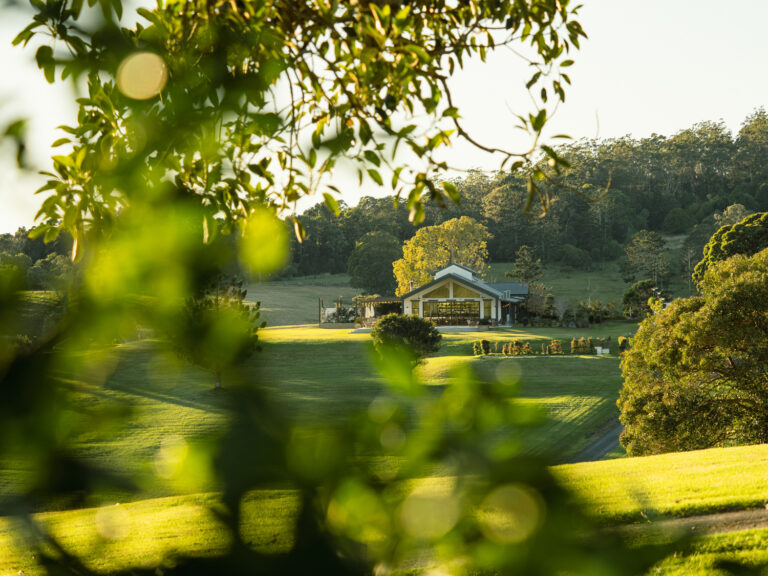
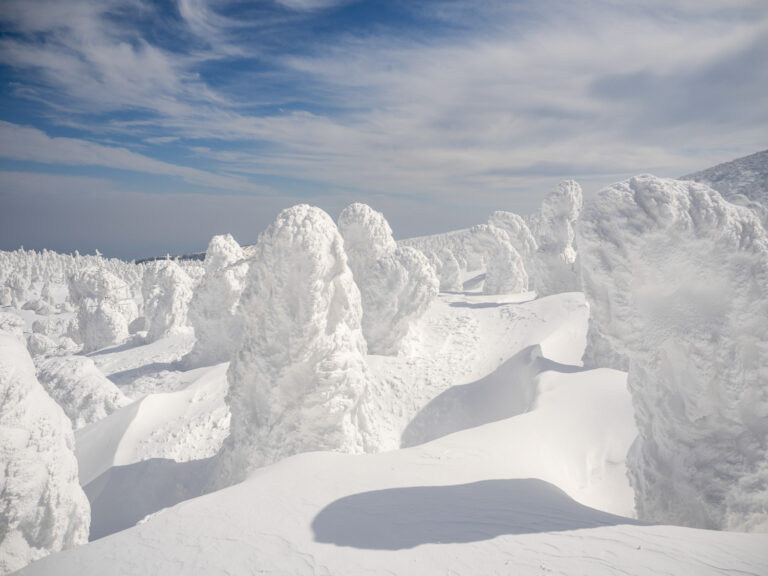

Leave a Comment